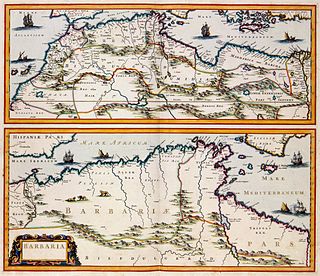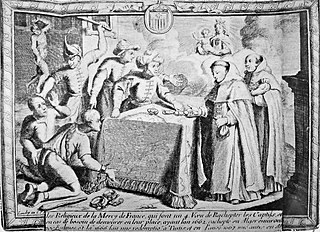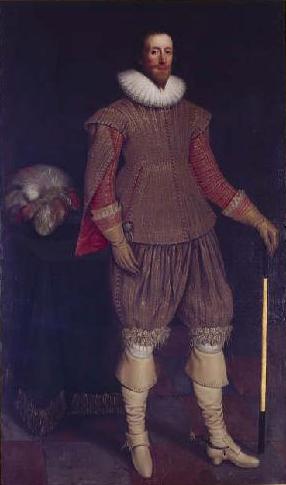T.A.Z.: The Temporary Autonomous Zone is a book by the anarchist writer and poet Hakim Bey. It was published in 1991 by Autonomedia and in 2011 by Pacific Publishing Studio (ISBN 978-1-4609-0177-9). It is composed of three sections, "Chaos: The Broadsheets of Ontological Anarchism", "Communiques of the Association for Ontological Anarchy" and "The Temporary Autonomous Zone".
Peter Lamborn Wilson was an American anarchist author and poet, primarily known for his concept of Temporary Autonomous Zones, short-lived spaces which elude formal structures of control. During the 1970s, Wilson lived in the Middle East, where he explored mysticism and translated Persian texts. Starting from the 1980s he wrote numerous political writings, illustrating his theory of "ontological anarchy".

The Barbary Coast was the name given to the coastal regions of North Africa or Maghreb, specifically the Ottoman borderlands consisting of the regencies in Algiers, Tunis, and Tripoli, as well as the Sultanate of Morocco from the 16th to 19th centuries. The term originates from the exonym of the Berbers.

The Barbary pirates, Barbary corsairs, or Ottoman corsairs were mainly Muslim pirates and privateers who operated from the Barbary States. This area was known in Europe as the Barbary Coast, in reference to the Berbers. The main purpose of their attacks was to capture slaves for the Barbary slave trade. Slaves in Barbary could be of many ethnicities, and of many different religions, such as Christian, Jewish, or Muslim. Their predation extended throughout the Mediterranean, south along West Africa's Atlantic seaboard and into the North Atlantic as far north as Iceland, but they primarily operated in the western Mediterranean. In addition to seizing merchant ships, they engaged in razzias, raids on European coastal towns and villages, mainly in Italy, France, Spain, and Portugal, but also in the British Isles, the Netherlands, and Iceland.

Libertatia was a purported pirate colony founded in the late 17th century in Madagascar under the leadership of Captain James Misson. The main source for Libertatia is Volume 2 of A General History of the Pyrates, a 1724 book which describes Captain Misson and Libertatia. Little to no corroborating evidence for Libertatia beyond this account has been found, however. Whether Libertatia was real but somehow "lost" to history, a pirate legend that the author recorded based on interviews with sailors, or a concocted work of utopian fiction by the author from the start is contested.
Murat Reis the Elder was an Ottoman privateer and admiral, who served in the Ottoman Navy. He is regarded as one of the most important Barbary corsairs.

Pirate havens are ports or harbors that are a safe place for pirates to repair their vessels, resupply, recruit, spend their plunder, avoid capture, and/or lie in wait for merchant ships to pass by. The areas have governments that are unable or unwilling to enforce maritime laws. This creates favorable conditions for piracy. Pirate havens were places where pirates could find shelter, protection, support, and trade.
John Ward or Birdy, also known as Jack Ward or later as Yusuf Reis, was an English-Ottoman pirate who later became an Ottoman Corsair for the Ottoman Empire operating out of Tunis during the early 17th century.

The sack of Baltimore took place on 20 June 1631, when the village of Baltimore in West Cork, Ireland, was attacked by pirates from the Barbary Coast of North Africa – the raiders included Dutchmen, Algerians, and Ottoman Turks. The attack was the largest by Barbary slave traders on Ireland.
Jan Janszoon van Haarlem, commonly known as Reis Mourad the Younger, was a former Dutch pirate who became a Barbary corsair in Ottoman Algeria and the Republic of Salé. After being captured by Algerian corsairs off Lanzarote in 1618, he converted to Islam and changed his name to Mourad. He became one of the most famous of the 17th-century Barbary corsairs. Together with other corsairs, he helped establish the independent Republic of Salé at the city of that name, serving as the first President and Commander. He also served as Governor of Oualidia.

The Barbary slave trade involved slave markets in the Barbary States. European slaves were acquired by Muslim Barbary pirates in slave raids on ships and by raids on coastal towns from Italy to the Netherlands, Ireland and the southwest of Britain, as far north as Iceland and into the Eastern Mediterranean.
This timeline of the history of piracy in the 1650s is a chronological list of key events involving pirates between 1650 and 1659.
Siemen Danziger, better known by his anglicized names Zymen Danseker and Simon de Danser, was a 17th-century Dutch privateer and Barbary corsair based in Ottoman Algeria. His name is also written Danziker, Dansker, Dansa or Danser.

The Republic of Salé, also known as the Bou Regreg Republic and the Republic of the Two Banks, was a city-state maritime corsair republic based at Salé in Morocco during the 17th century, located at the mouth of the Bou Regreg River. It was founded by Moriscos from the town of Hornachos, in Western Spain. The Moriscos were the descendants of Muslims who were nominally converted to Christianity, and were subject to mass deportation during Philip III's reign, following the expulsion of the Moriscos decrees. The republic's main commercial activities were the Barbary slave trade and piracy during its brief existence in the 17th century.

The Salé Rovers were a group of Barbary corsairs active during the 17th and 18th centuries in the Mediterranean Sea and Atlantic Ocean. Like other Barbary corsairs, they attacked Christian merchant shipping and ransomed or enslaved those they captured. Numerous Salé Rovers operated out of the Republic of Salé, which was established on the mouth of the Bou Regreg river and existed from 1627 to 1668. Many of the corsairs which belonged to the Salé Rovers were of European descent, predominantly English and Dutch Protestants. One such corsair was Dutchman Jan Janszoon, who converted to Islam after being captured by Barbary corsairs in 1618 and was renamed Murat Reis.

Anglo-Turkish piracy or the Anglo-Barbary piracy was the collaboration between Barbary pirates and English pirates against Catholic shipping during the 17th century.

Sir Francis Verney was an English adventurer, soldier of fortune, and pirate. A nobleman by birth, he left England after the House of Commons sided with his stepmother in a legal dispute over his inheritance, and became a mercenary in Morocco and later a Barbary corsair.
Sir Walter Coppinger was a member of the Irish nobility from County Cork, Ireland, who was a magistrate of Cork city, a lawyer, and a landlord. Coppinger came from one of the most prominent families in Cork city; though himself of Hiberno-Norse rather than Old English or Gaelic descent, he was hostile to the English settlement of Cork, and had a reputation for ruthlessness.
John Dunn Hunter was a leader of the Fredonian Rebellion.
David Graeber was an American anthropologist and social theorist. Unless otherwise noted, all works are authored solely by David Graeber.











